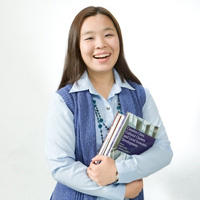March 8 is International Women’s Day. In celebration of this day, Ju Yeong Jang, a KAIST alumnus, has organized a committee on campus to spread the word about the meaning behind this particular day. Through this committee, Jang not only plans to celebrate women’s economic, political and social achievements and promote feminism, but also to expose to the public the violence and discrimination that women still face today.

Could you briefly introduce yourself?
My name is Ju Yeong Jang, and I entered KAIST in 2000 as an undergraduate for a Bachelor’s degree in Biological Sciences. In February of 2009, I graduated from the KAIST Graduate School of Culture Technology with a Master’s degree. Currently, I am a member of the New Progressive Party here in Daejeon, and I also ran for the Daejeon Metropolitan Council Committee last year.
Could you give us a background of International Women’s Day?
International Women’s Day is a day dedicated to the rights of working women. More than a hundred years ago in 1908, 15,000 women marched through New York City demanding better pay, shorter hours, equality, and voting rights. Since then, the feminist movement spread throughout Europe and eventually to the rest of the world. In 1910, Clara Zetkin of Germany started up the first International Women’s Day to seek equal opportunities such as women’s suffrage. In South Korea, people were able to openly celebrate this day only after 1985. This year marks the 103rd International Women’s Day.
What is the meaning behind "Bread and Roses" in your slogan?
The term "Bread and Roses" comes from a song written by James Oppenheim in the early 20th century. Bread symbolizes the bare necessities of life for survival while roses stand as a symbol of dignity and respect for any human being. However, women are struggling today in order to gain better working conditions and higher wages. Many are still ignored and often suppressed at work; women face social exclusion and inequality.
What are some of the current issues associated with women’s rights?
Recent statistics on income clearly portray the disparity between men and women. In November 2010, the average income per month for women was around 1.38 million Korean won and 2.37 million won for men. That means women earn 58% of what men earn for the same amount of labor. Moreover, the ratio of permanent work to temporary (part-time) jobs is 6:4 for men. For women, it is the complete opposite at 3.5:6.5.
It may seem like women and men are equal in terms of social rights but when you look carefully into it, we find that such is not the case. Women still receive unfair treatment and are often reproached for being pregnant at the workplace. Recently, I came across advice for women preparing for job interviews: One is not to say that she has plans on becoming a mother after joining the company.
So for the 103rd International Women’s Day in March, we want to alert people about the discrimination women face daily and help women gain respect, appreciation, love, and rights that they deserve.
What are your plans for the future?
Within KAIST, I want to plan various events and projects so we can share our ideas with the school community. I would love to receive opinions and hear from the female students as well. Displaying our work and research to the public and taking Polaroid pictures of students in celebration of Women’s Day are some of the goals to give KAIST students an opportunity to understand equality between the two sexes.
Do you have any advice for female students here at KAIST?
To the female students who make up about 25 percent of the entire student body, I would like to tell them that it is okay. It is okay to be uncomfortable and it is okay to be exhausted. Have respect for yourself at all times, live up to your expectations and flaunt your full potential. Do not try to satisfy anyone else or be limited by other people’s judgments.
Any last words?
As a graduate of KAIST, I want to keep my relationship with the current students at school through the work that I am doing. Anyone is welcome to participate, study, and work with us. Students at KAIST mostly study science and engineering, and everyone should keep in mind how their academic work will translate into society in the future. It is time they reminded themselves, “Why do I study? What for? And for whom?”

